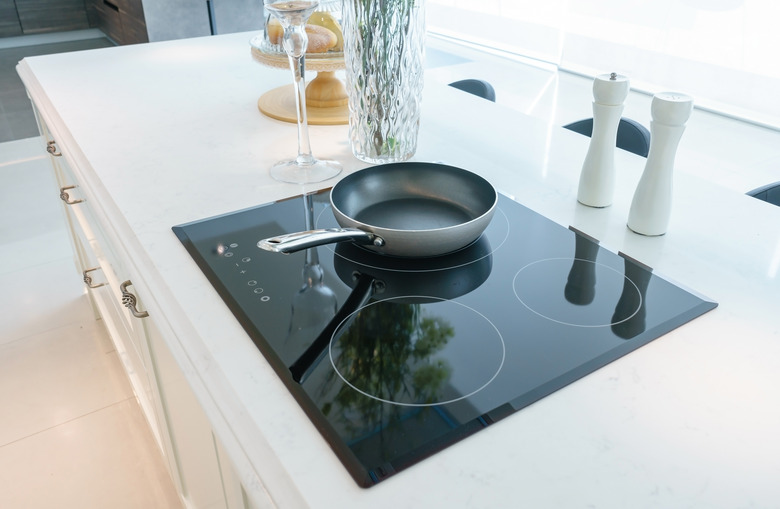Can T-Fal Be Used On Glass Cooktops?
When you're in the market for pots and pans, T-fal (or Tefal, if you live outside North America) is a brand you'll see frequently. It's a subsidiary of French conglomerate Groupe SEB, which also owns onetime American brands Mirro, WearEver and All-Clad. The T-fal line includes a wide range of pots and pans, some of which are well-suited for use on your glass cooktop. Others aren't, so you'll need some basic information before you make a purchase.
Tip
Many types of T-fal cookware are suitable for use on glass stove tops, but others are less so.
Two Types of Glass Cooktops
Two Types of Glass Cooktops
Before you choose your pots or pans, you'll need to know which type of glass cooktop you own. The most familiar variety has traditional heating elements underneath the cooking surface, which heat relatively slowly and retain heat for a long time. They're essentially the same as a ring-coil electric stove, except that the coil is hidden under the flat, easy-to-clean stove top.
The second type is induction cooktops, which use a magnetic field to heat the pan directly rather than transferring heat from a hot burner. Serious cooks love induction because the stove's heat can be raised and lowered almost instantly, as with a gas stove. Induction cooktops have the additional convenience of a reduced need for venting, as with an electric stove. Their limitation is that the pans you choose have to be magnetic, which rules out many popular styles.
Choosing the Right T-Fal
Choosing the Right T-Fal
Both types of cooktop have similar surfaces with similar vulnerabilities. While they're durable and heat-proof, they can be scratched, chipped or abraded by poorly chosen cookware. The most common culprits are heavy pots and pans, including cast iron and enamel-coated varieties. T-fal specializes in lightweight cookware, so your choices are less about protecting the surface and more about picking the right pan for the job.
The best cookware for glass top stoves is light enough to not cause damage but maintains good heat distribution. Luckily, most T-Fal pots and pans fit that description.
Nonstick T-Fal Pots and Pans
Nonstick T-Fal Pots and Pans
T-Fal's nonstick cookware is typically made from aluminum with a nonstick coating. The original coating was Teflon, and the original "Tefal" spelling of the company's name simply combined the first syllables of Teflon and aluminum. Current nonstick pans use more modern coatings but still generally use aluminum.
Aluminum on a glass top stove can leave marks that are difficult to remove, but excessive heating is a bigger issue. If you've heard of a glass top stove warping pans, this is why. Once a pan warps, it won't sit properly on the stove's flat surface. To avoid this, choose pans that are heavier or are made of an alloy rather than pure aluminum.
Ceramic T-Fal Pots and Pans
Ceramic T-Fal Pots and Pans
Some T-Fal uses a ceramic inner surface rather than a traditional nonstick coating. These are more durable because the ceramic is bonded to the metal and can't peel, as other nonstick coatings sometimes will. They're typically heavier-duty than the company's conventional nonstick pans.
Stainless Steel T-Fal
Stainless Steel T-Fal
Although nonstick pans are the company's bread and butter, T-Fal also makes cookware in stainless steel. Steel conducts heat poorly, so inside the base of the pan you'll find a pad of more conductive material such as aluminum. Foods can and will stick to stainless steel, but it's better for browning and searing purposes.
The Bottom Line
The Bottom Line
Each type of cookware has its pros and cons. The lightweight, nonstick pans are prone to warping at high temperatures and won't work on induction. Ceramic-coated pans won't work on induction either and may mark your stovetop, but they're durable and reliable. Some may be heavy enough to chip your cooktop if dropped.
Stainless steel is also heavy enough to chip a cooktop accidentally, and models with ridged or textured undersides might scratch or abrade your cooktop. Stainless steel will often — but not always — work on induction cooktops, so your best bet is to bring a magnet when you go shopping. If the magnet sticks, the pan will work on your cooktop.
